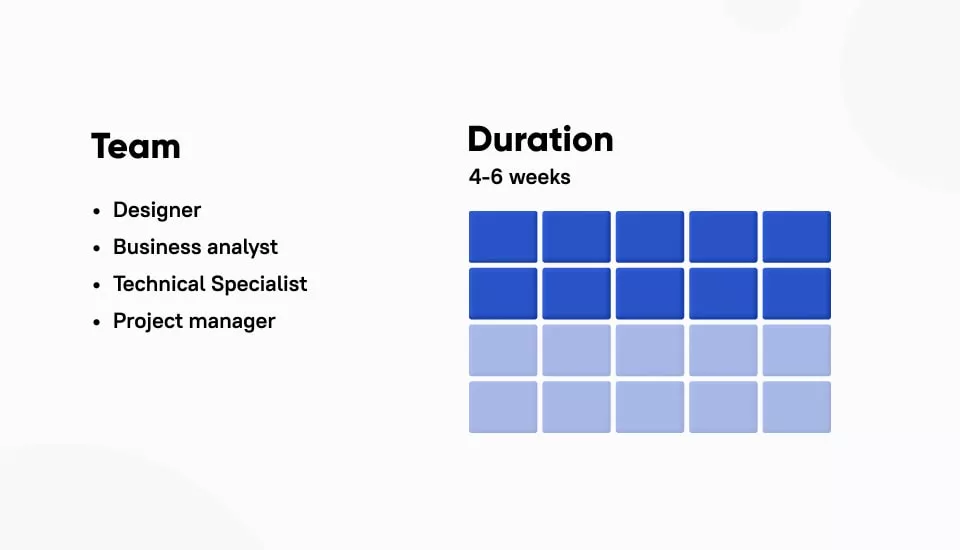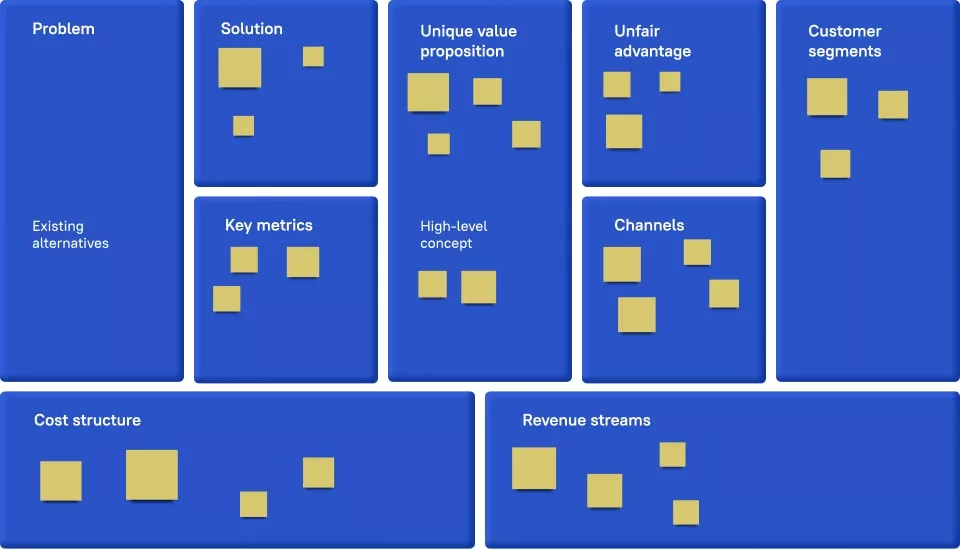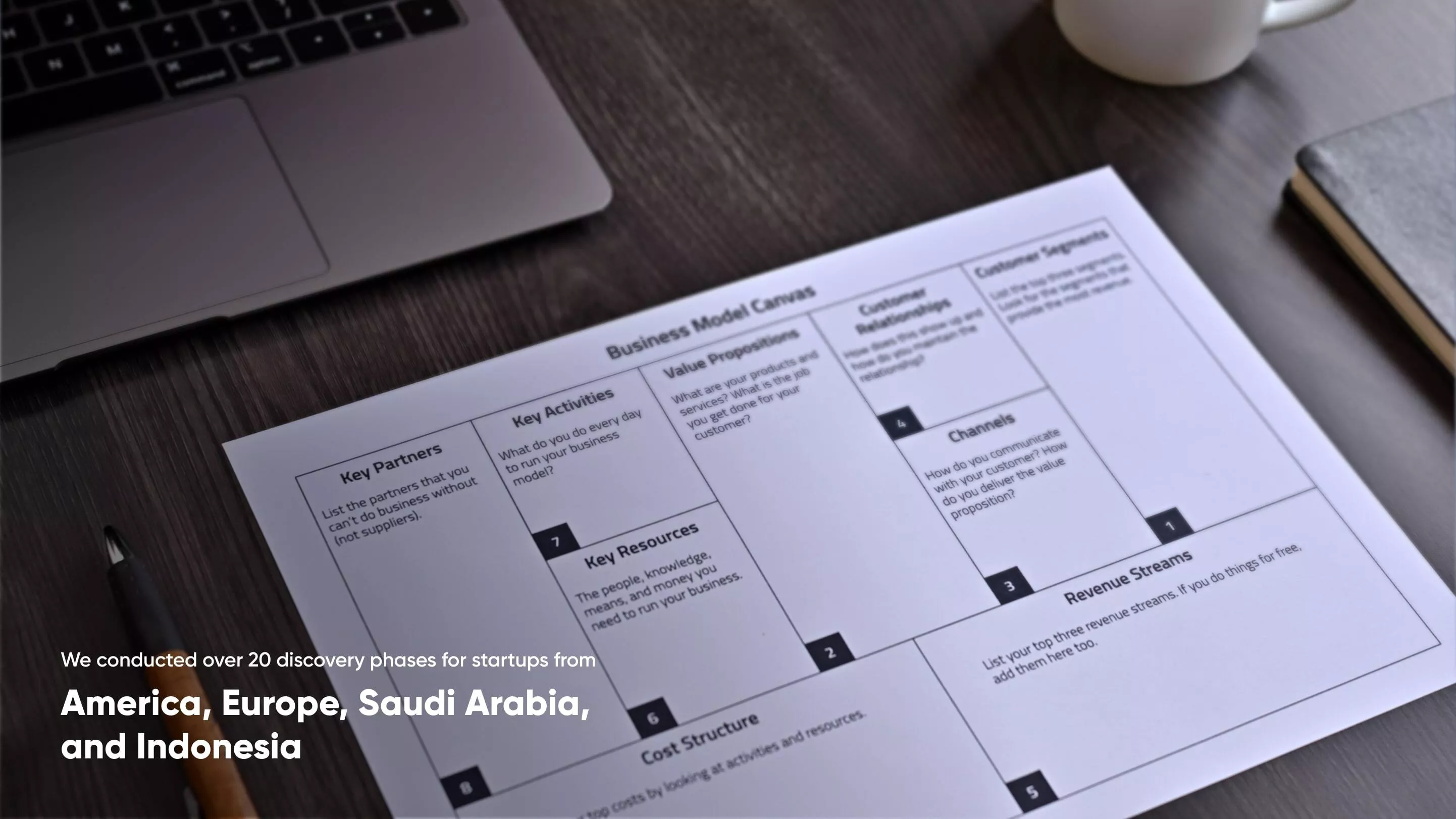
Every successful project begins with a solid foundation. In software development, it is a discovery phase services, understanding, and clarity. It is known as business analysis for new product development. This crucial stage lays the groundwork for a seamless and fruitful journey ahead. It ensures that your project stays on course and delivers exceptional results.
In this blog post, we'll unveil the significance of business analysis. Discuss how it sets the stage for a triumphant software development journey. We will also highlight its importance and benefits.
What is Business Analysis in New Product Development?
Research, requirement gathering, and understanding stakeholder needs are all part of business analysis. It is conducted to bridge the gap between business objectives and technical implementation. In simple terms, it's a strategic process where the developers work with stakeholders to comprehend the project's objectives, specifications, and constraints.

It's like laying the foundation of a robust building. Without a solid base, the entire structure could crumble.
Key objectives of the business analysis:
- Understanding the vision. Before any development work can begin, it is crucial to understand the client's vision, goals, and expectations. This means holding detailed discussions with clients to clarify their ideas and requirements. It also includes taking the time to research the industry and market. Thus, you'll gain a comprehensive understanding of the software's potential uses and benefits.
- Defining scope and requirements. At this stage a project plan is created that describes the development timeline, budget, and key milestones. You also need to determine how the software works and its key features. Decide on the programming languages and technologies to use.
- User research and personas. Conducting in-depth user research is crucial if you want to develop software that caters to the target market's needs. Based on this research, it is important to create user personas. You can use them to guide the design and development process.
- Competitor Analysis. To stand out in a crowded market, it is important to study the competition. This way, you can identify opportunities for differentiation. Competitor analysis involves analyzing what features competing software offers. You also need to review their pricing and marketing tactics. By understanding what sets the competition apart, you can identify unique selling points to leverage in your software.
- Technical Feasibility. It is important to assess the project's technical feasibility. That is how you ensure the project is finished on schedule and within budget. The availability of resources, such as staff, hardware, and software, must be assessed.
How long does the business analysis of new product development take?

This phase typically lasts 1-8 weeks. This timeframe allows for efficient planning and sets the foundation for a successful development journey. However the specific timeframe hinges on factors such as project size and complexity. Furthermore, the dynamics of the development team play an essential role in shaping the duration and efficacy of this phase.
Want a web app that does more?
Let's build a solution that's smart, sleek, and powerful.
Alina
Client Manager

Business Analysis in New Product Development: Why Is It Important?
Business analysis in software development is not just a box to tick. It is the backbone of the entire project. And its significance lies in the following aspects.
Requirement Elicitation
In software development, it is crucial to understand what stakeholders need. Business analysis enables the team to analyze user requirements, business goals, and technical specifications. Cooperation and goal-sharing are ensured through this approach.
Budget and Timeline Estimation
Accurately estimating project costs and timelines is crucial for project success. Understanding the project scope is necessary to achieve this. Business analysis plays a crucial role in providing this understanding.
By analyzing the project scope, you can make accurate costs and timelines estimates. The result is a reduction in cost overruns and project delays. Add to this other problems that might hurt the success of the project.
Risk Mitigation
With business analysis in the new product development process, you can see possible risks at an early stage. Assess the risks thoroughly and develop plans to avoid any potential pitfalls. It will reduce the probability of costly mistakes occurring.
Efficiency and Cost Savings
By focusing on optimizing business processes and improving workflows, business analysis in new product development leads to better efficiency and reduced costs. This results in a higher return on investment and a more competitive edge.
User-Centric Approach
Making users the focal point of the development process helps you to produce software that addresses their problems. Customer satisfaction is increased by favoring a user-centric approach.
Enhanced Project Transparency
Transparency is vital in project management. Analysts maintain comprehensive documentation, including business requirements and acceptance criteria. This transparency fosters collaboration and provides stakeholders with insights into the project's progress.
Facilitating Agile Development
In Agile environments, analysis plays a critical role in iterative development. Business analysts (BAs) prioritize features and ensure that each iteration delivers the most value.
The Main Steps in Business Analysis in New Product Development Process
Here are the main steps involved in business analysis for new product development. We will shed light on how it paves the way to success.
Defining Project Scope and Objectives
Every project begins with an understanding of its scope and objectives. BA collaborates with development teams, stakeholders, and end-users to outline the project's boundaries. Thus, they identify what the software should and should not accomplish. A conceptual description of the business model of your product for MVP is created at this stage. At Stfalcon we use Lean Model Canvas for this purpose. The project gains a solid foundation by setting achievable goals early on. As a result, scope creep is prevented. And you can design the final product to meet the expectations of stakeholders.

Understanding the Market Needs and Customer Demands
- Market analysis. Extensive market research is required to find gaps, trends, and pain points, for the target audience definition. Businesses should study consumer behavior, preferences, and demands. Then, they will know exactly what their customers want. Understanding these aspects allows companies to customize their offerings to meet customer demands.
- Communication with stakeholders. Projects rarely exist in isolation. There are often many stakeholders, each with unique needs and expectations. Identifying these key players and understanding their perspectives is essential. Surveys, workshops, and one-on-one interactions present vital insights into the stakeholders' requirements. They also shed light on possible hitches.
- Conducting competitor analysis. In a competitive marketplace, knowing your competitors is vital. Considering the advantages and disadvantages of rival products gives you important insights into what can make your product unique. This step gives businesses the chance to pinpoint their unique selling points (USPs). Then create value propositions that will attract customers to choose their new product.
Developing a Customer Journey Map
Understanding your customers is paramount to crafting a project that resonates with them. By walking in your customers' shoes, you can gain valuable insights into their motivations and pain points.

A map depicts your customers' interactions with your product at various touchpoints throughout their experience.
Optimizing User Flow
A seamless user experience is key to the success of any project. User Flow is the art of crafting a clear and intuitive path for users. As a result, they achieve their objectives within your product with ease. User Flow outlines the step-by-step journey users take to navigate through your project and achieve their goals.
Creating Personas and User Stories
To craft a product or service that speaks to its users, you need to empathize with them. Personas and user stories breathe life into the target audience. They enable the team to walk in the customer's shoes and anticipate their needs.
User Stories are a key concept in agile software development. They are customer-centric descriptions written from the perspective of an end-user. They align the project with real-world user scenarios.
The team can focus on features that offer the greatest value by creating User Stories. This helps to fully understand user expectations.
Prioritization and Requirement Analysis
After collecting the requirements, it is time to validate them for feasibility. Prioritization becomes a crucial factor in the success of the software development process. It helps the team focus on the most critical aspects of the project. This, in turn, opens doors for delivering a minimum viable product (MVP).
Mind maps are often used as a practical tool to organize the information gathered.
Defining Project Scope
Stating the project scope is like drawing the boundaries on a blank canvas. It specifies the deliverables, features, and constraints of the project.
The project team's focus is maintained, and scope creep is avoided with a clearly defined scope. This leads to efficient resource use and better time management.
Forming the Product Requirements Document (PRD)
At the heart of the discovery phase is the creation of the PRD. Think of it as the project's compass. It aids in the understanding of the project's goals, scope, and objectives by all involved.
The Project Requirements Document becomes a comprehensive guide for a team. It gathers all the insights and clarifies expectations. At this stage, it's crucial to engage in in-depth discussions with all parties involved.
Testing and Feedback
This phase offers a great opportunity to gain insightful feedback from end users and stakeholders. Honest feedback acts as a guiding light. It illuminates aspects that need improvement and validates the ones that resonate positively.
With continuous testing and iteration, the project team refines the concept. It fine-tunes features and crafts a more comprehensive and user-friendly product.
Creating a Prototype or MVP
A vital step in business analysis and development is building a prototype. Businesses can test their ideas with a prototype or MVP. They get input from stakeholders and prospective clients. It is possible to make any necessary adjustments early in the development process.
This iterative process lowers the possibility of creating a subpar final product and raises the possibility of success.
Creating a Product Development Roadmap
The final vital activity is mapping out the Product Development Roadmap (PDR). Imagine a treasure map that leads you to the pot of gold at the end of the rainbow. That's what a product development roadmap does for your project!
A PDR is a document that outlines the journey from concept to a fully-fledged product. Moreover, the roadmap enables improved resource management. It ensures that the right talent and technologies are distributed properly.
Our Experience

Discovery Phase for Mining Company
A client came to Stfalcon with a request for a complex system (mobile application and web dashboard) to track equipment status and optimize queues of trucks with minerals in ports.
Sensors are used to gather truck parameters and process them automatically. The dashboard should warn about all potential problems and send direct instructions to the drivers. The Stfalcon team started with the extraction and delivery processes deconstruction, to understand the business model, and spot the weak points in the existing solutions.
The research process consisted of:
Lean Model Canvas
Here we focused on problems and solutions, key metrics, customer segments, and competitive advantages to form a unique value proposition.
CJM of main flow for administrator and driver
We defined a scenario for each role, taking into consideration the necessary pauses for Muslim drivers and weather conditions, like rains or storms, that also influence the truck operations. What is more, sensors allow us to determine all stages of loading and unloading and to notify drivers and admins as to the process progress.
Prototypes of web dashboard and tablet mobile application were created by our team as well as a presentation for investors with the product vision, detailed estimations, and budget plan.
Discovery Phase for Elvia
The core concept of the project is to provide a platform for artists where they can be booked to perform at venues. Artists can create detailed profiles showcasing their music, share demos, and upload videos or music tracks. Venues can review this information and make informed decisions about booking the artist.
To ensure the success of the project, we initiated a discovery. During this phase, we collaboratively filled out an LMC with the client. Subsequently, we designed and conducted questionnaires for both venues and artists to gain firsthand insights into their working dynamics, lifestyles, and thoughts on potential collaboration.
Conclusion
All in all, business analysis lays the groundwork for a software development project and Stfalcon knows how to do it most effectively for our clients. If you're about to embark on this journey, give the analysis phase the attention it deserves and trust it to the professionals.
By doing so, you'll set your project up for success, and we are always eager to dive into new research. Сontact us and let’s dive in together.

 Read the full case study
Read the full case study
 Read the full case study
Read the full case study

